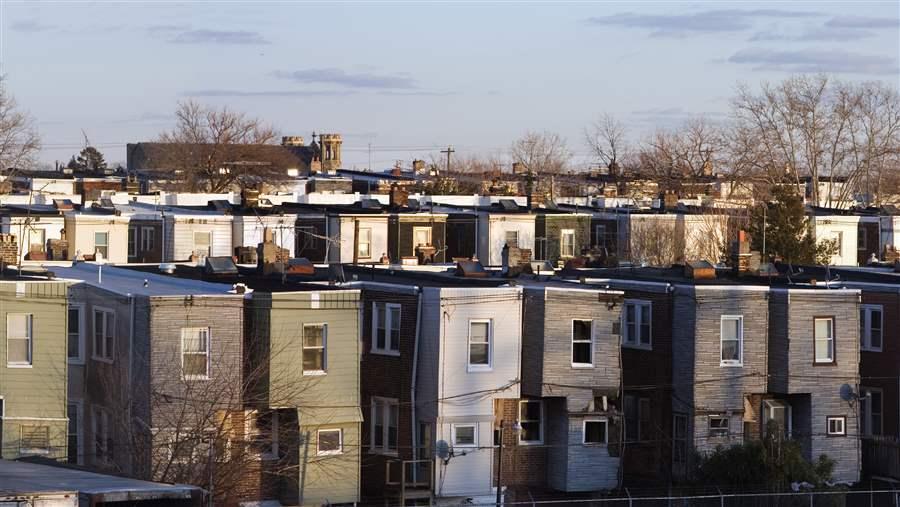Philadelphia’s Progress on Its Property Tax Overhaul
The Actual Value Initiative
 iStockphoto
iStockphotoIn 2013, after several years of public discussion and debate, the city of Philadelphia adopted a sweeping property tax overhaul known as the Actual Value Initiative (AVI). Under AVI, the city reassessed the market value of every property in Philadelphia, changed the way individual assessments are used to calculate tax bills, and introduced programs to mitigate tax increases for some property owners. Pew produced two reports on aspects of AVI in the period leading up to its implementation. The first, The Actual Value Initiative: Overhauling Property Taxes in Philadelphia, released in 2012, looked at the experiences of other jurisdictions and why reform had become necessary in Philadelphia. The second, AVI: The Shift in the Tax Burden, came out in 2013 and explained how the overhaul would result in the residential sector paying a greater share of the city’s overall tax bill than it had been.
Building on that research, this brief assesses the progress of the reform effort through spring 2015, including the role of the review and appeals process and new relief programs, and highlights issues that remain to be resolved. It addresses both the hopes of supporters, who said the reform would help make the city’s property tax system fairer, and the fears of critics, who said the new values, by producing dramatically higher tax bills in some residential neighborhoods, would drive out homeowners and reduce home prices.
Key findings:
- When AVI was enacted, tax assessments declined for many property owners and rose for others, many of whom challenged the new valuations. The number of challenges exceeded city officials’ expectations: owners of 10.3 percent of the city’s real estate—59,627 properties in all—sought review and/or subsequent appeal, at least 20 times the number in a normal year before AVI took effect. The net effect of the reviews and appeals has been a reduction in overall taxable value by $1.7 billion, or 1.73 percent, which means less revenue for the city.
- AVI did not affect all types of properties equally; the residential sector experienced the most growth in assessed value and two major policy initiatives mitigated some of those tax increases. The Longtime Owner Occupants Program (LOOP) provided $16.8 million in targeted relief for almost 18,000 homeowners, and a homestead exemption reduced the tax bills of 216,344 homeowners. Officials estimated that 68,000 qualified Philadelphians have not signed up for the homestead exemption.
- The long-term impact of AVI remains unclear. No large-scale departure of residents has occurred; although some homeowners struggled to pay their taxes, Philadelphia’s population increased modestly in 2014, the eighth consecutive year of growth. And despite fears to the contrary, residential sales prices appear to have risen in some of the areas with the biggest tax hikes.
- Significant work remains to finish the reforms that city officials set out to achieve with AVI. The next comprehensive reassessment is expected in 2017; experts say the city must undertake such reassessments regularly in the years ahead to sustain the new system’s accuracy and fairness.







